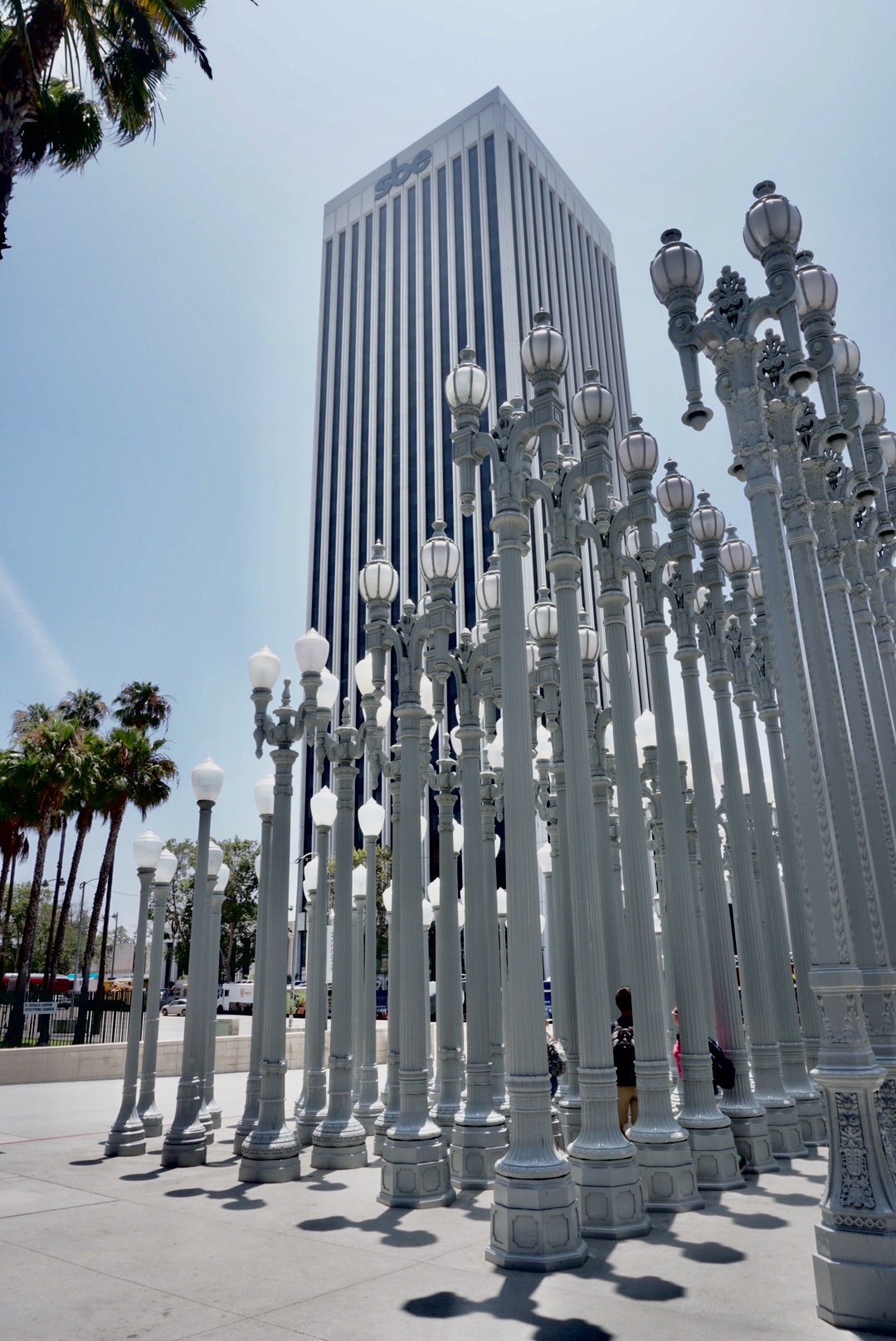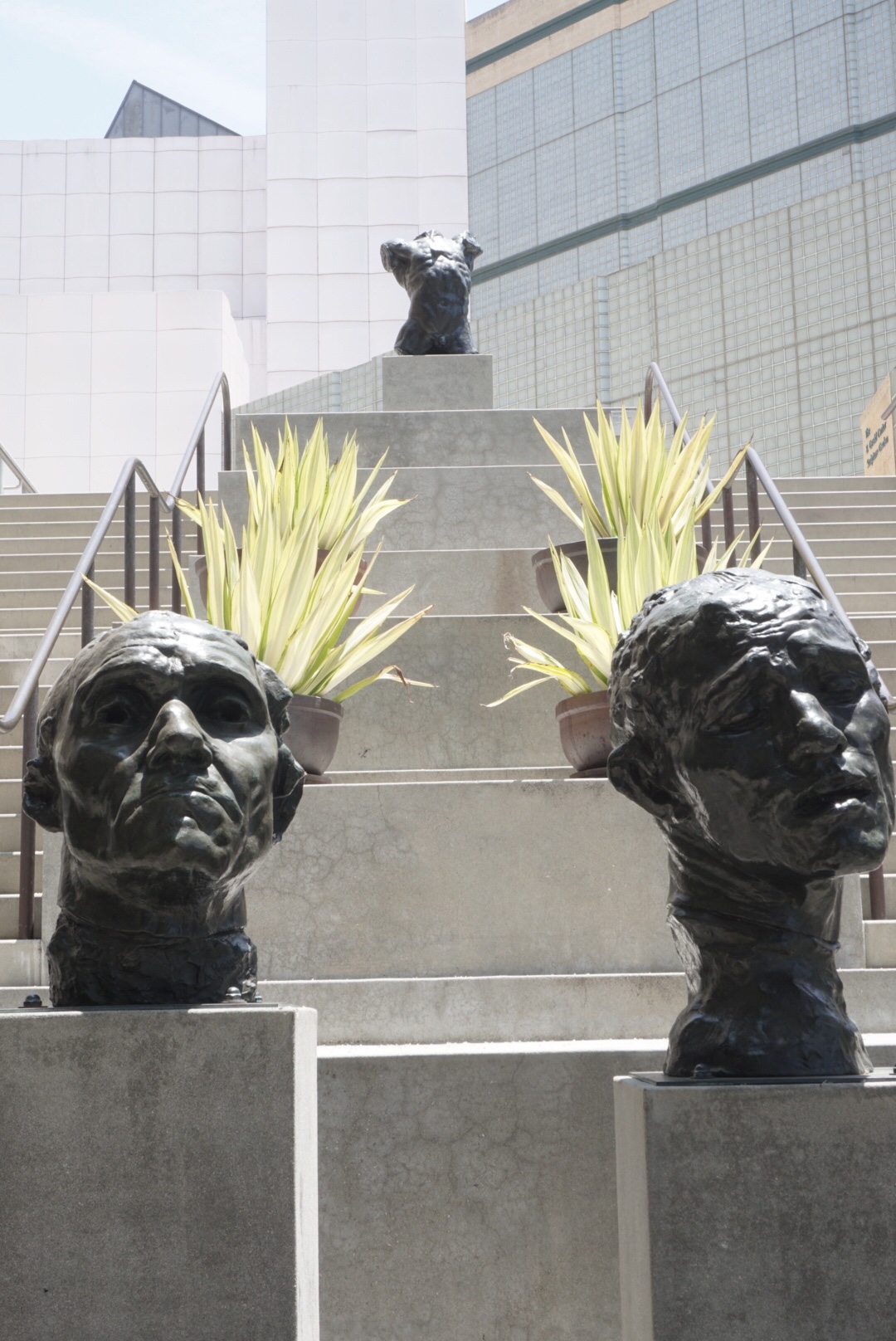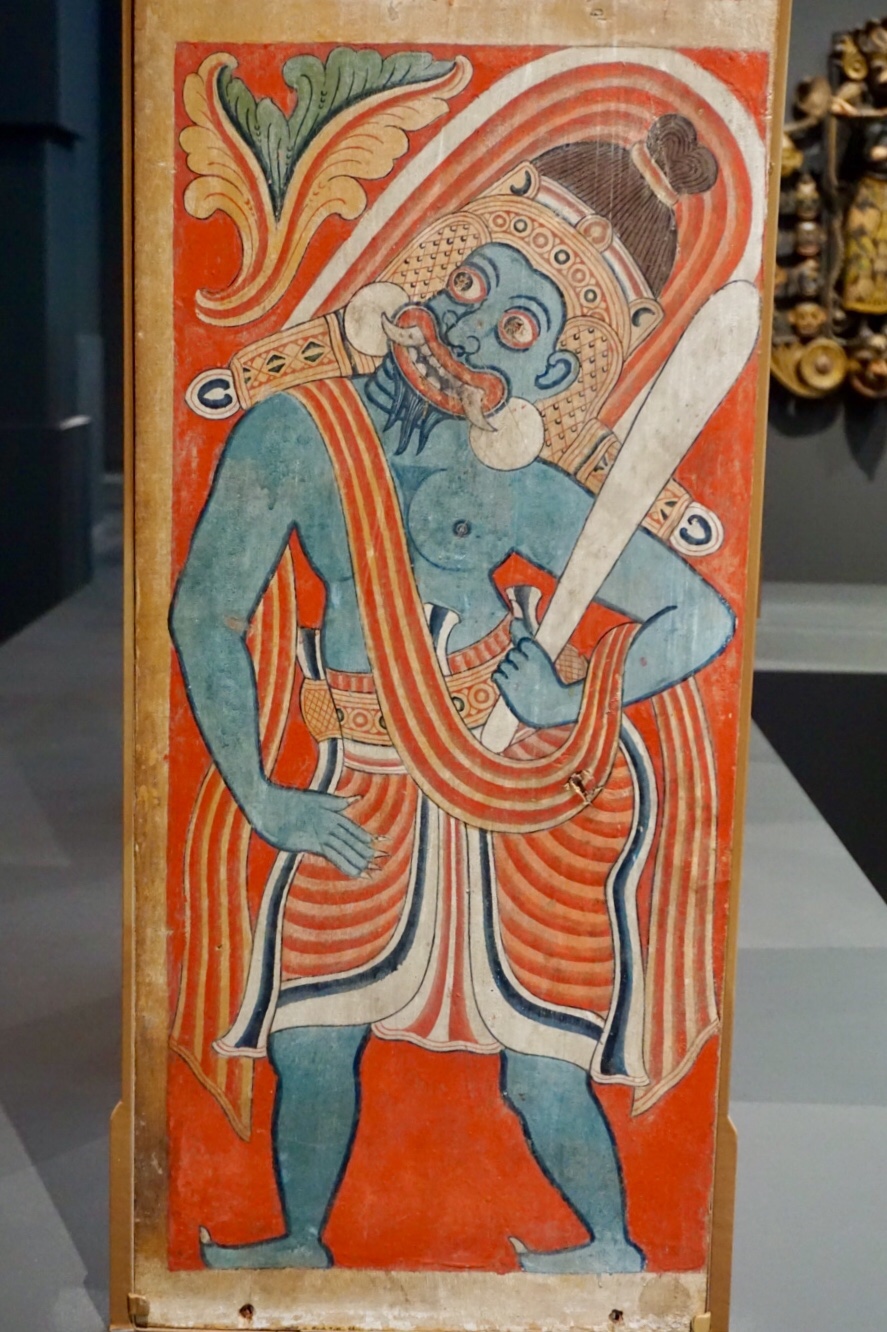Art does not reproduce the visible; rather, it makes visible.
Paul Klee.
LACMA, the Los Angeles County Museum of Art, is huge. It has everything from contemporary to Etrustan art.
Occasionally, I’m pleasantly surprised that I come across a famous painting or sculpture that I’d seen in books or film but never in reality. This time it was Magritte’s This is not a pipe, which is actually called The Treachery of Images.
At the other end of the spectrum, perhaps, was the giant inflatable Buddha! It was a slight contrast to those I saw in Sri Lanka.
Also fascinating was what appeared to be a giant tiger rug. It turned out to be made from thousands of cigarettes. Cleverly, the “rug” looked different depending on which end you were standing at (see photos).
Even with the new LACMA extension being built, there was lots to see. Nearby, also being built, was the new Movie Museum. It’s the glass globe-like building in the photos. I saw this man cornering one of the LACMA staff, telling her that there was a design flaw in the museum! She listened politely despite have nothing to do with the Movie Museum. The man’s main point was that the glass panels should have doubled up as solar panels. If the heat I experienced over the week was typical, he may have had a point.
LACMA is located on Museum Row, next to La Brea Tar Pits Museum, which is a small natural history museum. La brea means tar in Spanish. So the museum is really called the Tar Tar Pits Museum. At LA airport someone mentioned this museum to me. He said it was one of the hidden treasures of LA and that I must go there. I didn’t think I’d have time to go there so I didn’t seek it out. It turned out to be not that hidden since it was next to LACMA, the largest art museum in western USA!
The actual La Brea Tar Pit Museum is nothing special inside. However, the tar pits surrounding it are a curiosity. These are pits where tar has seeped up from the ground over thousands of years. Gradually, the tar can become so thick that animals are trapped in it and die. Some animals that have been found at the site include a saber-tooth cat, mammoth and American lion.
Inside La Brea Tar Pit Museum is an interactive installation of several pistons that you can play with to get an idea of the force exerted by the sticky tar. Pushing and pulling the pistons makes you realise how much strength is required to escape the tar pit, which may explain why more predators than prey became trapped. When an animal is trapped (and dies) the tar pit becomes a honey trap. Predators see a dead animal (ie food) and approach the tar pit, only to be trapped themselves. And so the cycle continues.
Near LACMA are also the striking tiger-like Petersen Automotive Museum and parts of the Berlin Wall!


































